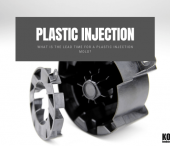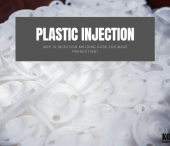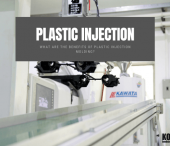When it comes to using gears, it has been proven that plastics perform significantly better because of the engineering principles for plastic gears that are put into them. Yes, metal gears have been in use for decades, but recently, the trend of plastic gears is catching up. Now, they even offer more and better functions than their metal counterpart.
But just what makes them perform better? And when it comes to gears - how do they work?
Let us understand the engineering principles behind plastic gears and its specific advantages.
Engineering Principles Behind Plastic Gears
There are limitations when it comes to gear function, whether they are made of metal or plastic. And plastic gears will do better if they stay within the limits of speed and load, especially since they are affected by increases in temperature as caused by friction, pressure and speed.
Now, let us go through this guide to plastic gearing and know what principles make plastic gears stay within its limitations and perform their best.
- Mating gear quality. This is an important factor to consider when it comes to plastic gears. The mating gear of a plastic one should be of a make that allows friction heat to dissipate quickly. One of the best materials for this is case-hardened steel. The harder it is, the slower the wear on the gear wheel and pinion.
RELATED SERVICES: Precision Injection Mold and Molding
It should be stressed that the driving pinion receives greater wear and should always be made of wear-resistant material. However, if you are considering slow and lightly-loaded use, plastic mating gear can perform quite well with plastic gears.

- Automatic and continuous lubrication allows plastic gears to function better and last for longer, even in higher loaded applications. The principle behind this is that lubrication dissipates heat friction better. Just bear in mind that polyamides should not be lubricated with water since this material can absorb it.
- Noise generation. There is no doubt about the capacity of plastic gears to function noiselessly. This is attributed to the noise dampening properties of plastics. Thus, quieter gears that function smoothly are achieved. When steel against steel gears and steel against plastic gears are compared, the result revealed that steel against steel creates as much as three times the noise of the steel and plastic gear combination.
- Tooth temperature in continuous operation. Temperature plays an important role in the function of plastic gears. Specifically, it affects how much load plastic gears can be subjected to without resulting to negative effects or damages, such as deformation of the tooth gear. Unfortunately, the tooth temperature cannot be measured accurately, it can only be estimated. The calculation of such a number follows a formula, and the result can be quite high. Sometimes, it can even reach the melting temperature of plastic. However, using this same formula has never resulted to the melting of plastic tooth gears.
- Tooth temperature in intermittent operation. Plastic gears generally increase their load capacity in intermittent operation since this creates less friction heat. The tooth temperature in this kind of process can be calculated using a specific formula.
The design of plastic gears affects their function, and knowing what principles are behind plastic gear applications is important in arriving at an effective usage that can maximize its functions and lifetime. This is where Kore Industries are experts at, which is why our plastic gears provide the best functions, much like the calculation of the root strength of the teeth and the gear face load capacity.
If you want to understand the above principles and more surrounding plastic gears, do contact us at Kore Industries without any obligations. Click the button below now.
RELATED SERVICES: Precision Plastic Gears





